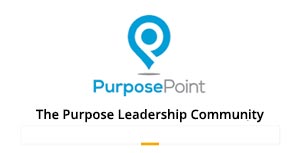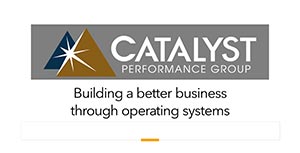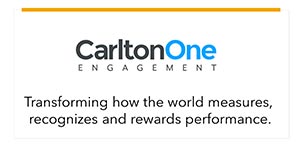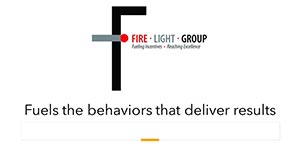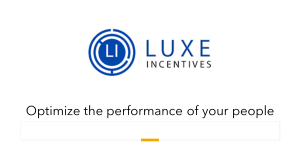The Compelling Benefits of Permission Marketing and Why They Remain Overlooked
 In the late 1990s, the concept of one-to-one and permission marketing were born with great promise. Yet, the current dominant approach to marketing today remains based on the traditional approach to business that relies on interruptive emails, search engine advertising and remarketing and focuses more on making promises than on keeping them through meaningful relationships. Worse yet, many companies, especially new ones, make lavish expenditures on vanity advertising, trade shows and events, with no clear return on investment. In the meantime, technology has made marketing more effective and measurable than ever, for less money, requiring no more than a change of mindset and a new tool kit of expertise based on helping rather than selling. Its based on applying the wisdom of the 1990s still not applied in the 2020s.
In the late 1990s, the concept of one-to-one and permission marketing were born with great promise. Yet, the current dominant approach to marketing today remains based on the traditional approach to business that relies on interruptive emails, search engine advertising and remarketing and focuses more on making promises than on keeping them through meaningful relationships. Worse yet, many companies, especially new ones, make lavish expenditures on vanity advertising, trade shows and events, with no clear return on investment. In the meantime, technology has made marketing more effective and measurable than ever, for less money, requiring no more than a change of mindset and a new tool kit of expertise based on helping rather than selling. Its based on applying the wisdom of the 1990s still not applied in the 2020s. By Bruce Bolger
Cutting-Edge Practices in the 1990s That Remain Largely Unfollowed
Most Frequent Marketing Mistakes
Basic Rules of Thumb
The Fundamental Principles of Purpose-Based Marketing: Identify and Build Relationships With the People Most Likely to Buy
Click here for a short deck that summarizes effective permission-marketing practices.
By Bruce Bolger
Today, almost every organization can significantly enhance the impact of marketing by becoming their own media platforms to build relationships using the right combination of content to engage their audiences over time. If your company wants to be there when customers are ready to buy, build relationships over time by helping, not selling. It will save you money, time, and will enhance the ability to measure long-term results.
This is the essential wisdom of one-to-one and permission marketing developed in the late 1980s and 1990s. This article is intended for anyone who oversees or manages business development or "demand generation." It is based on the one-to-one relationship-focused strategies advocated as early as the 1990s by Don Peppers and Martha Rogers, founders in 1993 of the pioneering Peppers & Rogers Group one-to-one marketing agency, and later by marketing influencer Seth Godin with his classic books on permission marketing. Their principles remain rarely followed in business: the ability to use technology to transform the efficiency of business development by identifying and building relationships with the people most likely to buy--using your very own databases as the basis for interactive media platforms rather than relying solely on third parties and acquired data to deliver your story to the right audiences. As early as 1993, New York Times columnist Stuart Elliott interviewed the author of this article for his marketing column on consumer motivation. “Consumer-product companies spend billions of dollars to attract customers, without any kind of strategic focus on keeping them...You have to motivate consumers to come to buy your product but then you have to deliver to them. Advertising creates customers, but once you get them, what are you doing to keep them?" Has much changed in the last 30 years?
This approach to identifying and building relationships with the people most likely to buy is based on creating value for people rather than extracting it through intrusive sales pitches still the norm throughout marketing. Godin correctly predicted that there would be many roadblocks and special interests standing in the way in the shift to permission marketing.
Cutting-Edge Practices in the 1990s That Remain Largely Unfollowed
In a Harvard Business Review article published in the January/February 1999 edition, the one-to-one marketing pioneers Peppers and Rogers co-authored
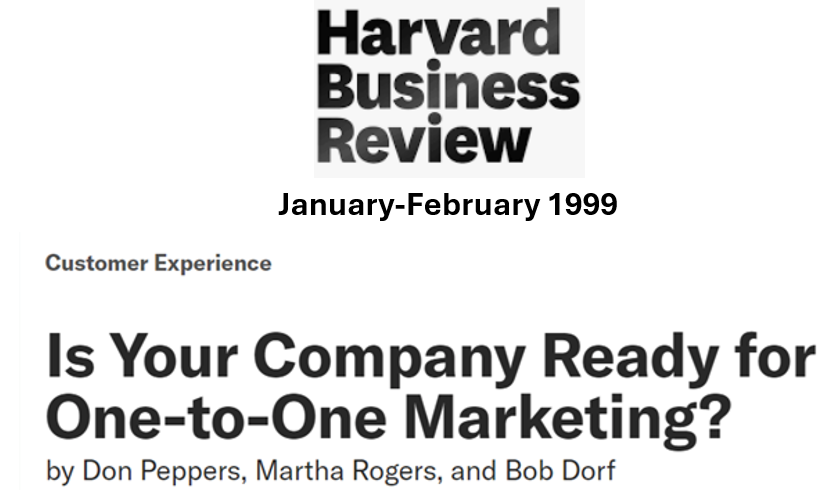 with Bob Dorf, the company's CEO at the time, articulated the vision: “The idea is simple: one-to-one marketing (also called relationship marketing or customer-relationship management) means being willing and able to change your behavior toward an individual customer based on what the customer tells you and what else you know about that customer. Unfortunately, too many companies have jumped on the one-to-one bandwagon without proper preparation. The mechanics of implementation are complex. It’s one thing to train a sales staff to be warm and attentive; it’s quite another to identify, track, and interact with an individual customer and then reconfigure your product or service to meet that customer’s needs."
with Bob Dorf, the company's CEO at the time, articulated the vision: “The idea is simple: one-to-one marketing (also called relationship marketing or customer-relationship management) means being willing and able to change your behavior toward an individual customer based on what the customer tells you and what else you know about that customer. Unfortunately, too many companies have jumped on the one-to-one bandwagon without proper preparation. The mechanics of implementation are complex. It’s one thing to train a sales staff to be warm and attentive; it’s quite another to identify, track, and interact with an individual customer and then reconfigure your product or service to meet that customer’s needs."He elaborates: “Improving both the cost-efficiency and the effectiveness of your interactions with customers is a critical component of a one-to-one marketing program. Cost-efficiency improves by directing customer interactions toward more automated and therefore less costly channels. For example, a company that provides helpful, up-to-date information at its Web site won’t need to spend as much as it once did supporting a more expensive call center. Effectiveness improves by generating timely, relevant information, providing either better insight into a customer’s needs or a more accurate picture of a customer’s value.”
 In the forward to the 1999 Seth Godin book, Permission Marketing: Turning Strangers Into Customers, Peppers writes: “I predict that businesses all over the world will soon be familiar with most of the concepts outlined in this book. Sales and marketing people everywhere will soon be talking about the very commonsense principles of Permission Marketing and how best to put these principles to work for their own business.”
In the forward to the 1999 Seth Godin book, Permission Marketing: Turning Strangers Into Customers, Peppers writes: “I predict that businesses all over the world will soon be familiar with most of the concepts outlined in this book. Sales and marketing people everywhere will soon be talking about the very commonsense principles of Permission Marketing and how best to put these principles to work for their own business.”Written long before Linkedin had emerged as a common business tool, Godin predicted an era in which every company could use gamification, entertainment, useful information, and other media based on permission to identify and build relationships with the people most likely to buy. In effect, companies could reduce their reliance on traditional middleman—the media companies—to whom they must pay a steep price and compete with others to gain access to audiences, when they can use the same techniques as publishers or entertainment companies to build and engage with their own audiences.
One can count on only a few hands the number of organizations one encounters that strategically and systematically apply these basic principles advocated by Peppers, Rogers, and Godin. This despite the fact that permission-based relationship marketing not only saves time and money and enhances the ROI of far more costly trade show, event, and advertising expenditures, but helps break down the traditional siloes between sales, marketing, and employees and enhances the ability to measure results.
.png) In Permission Marketing, Godin accurately predicted some of the stumbling blocks that would prevent widespread application of his theory, even after nearly 25 years since publication of his book. “The first is organization,” he wrote. “You’re probably not organized for permission marketing, and there are many, many entrenched special interests that will stand in your way...The second is greed. Once the seeds of permission are planted, there’s going to be a huge pressure to harvest the results right away. But the sooner you begin to leverage this base, the less it will grow. Giving is far more important than taking, especially at the beginning. Imagine how much less successful the frequent flyer programs would have been if they’d been as jammed with partners, restrictions, and special offers as they are today. Patience is critical. The third is foresight...The planning and prebuilt suites required for a permission campaign mean your organization must be disciplined enough to plan ahead. It’s harder than it sounds, especially the first few times.”
In Permission Marketing, Godin accurately predicted some of the stumbling blocks that would prevent widespread application of his theory, even after nearly 25 years since publication of his book. “The first is organization,” he wrote. “You’re probably not organized for permission marketing, and there are many, many entrenched special interests that will stand in your way...The second is greed. Once the seeds of permission are planted, there’s going to be a huge pressure to harvest the results right away. But the sooner you begin to leverage this base, the less it will grow. Giving is far more important than taking, especially at the beginning. Imagine how much less successful the frequent flyer programs would have been if they’d been as jammed with partners, restrictions, and special offers as they are today. Patience is critical. The third is foresight...The planning and prebuilt suites required for a permission campaign mean your organization must be disciplined enough to plan ahead. It’s harder than it sounds, especially the first few times.”Note: The author of this article launched Selling Communications Inc., in 1995 as a fax- and then Internet-based media company and target marketing agency founded to help clients identify and build relationships with the people most likely to buy. One of its first clients was Yoyodyne, the gamification company founded by Godin and later sold to Yahoo.
Use this quick checklist to benchmark the efficiency of your business development processes today based on the principles of permission-based relationship marketing. Scroll down for specific recommendations on how to implement permission marketing. But first, see if your company is guilty of any of these common practices.
Most Frequent Marketing Mistakes
1.Spraying and praying—Conducting e-mail blasts, social media programs, trade show and event marketing programs with no clear purpose, goals, objectives, or cohesive story.
2.Vanity advertising—Putting up big billboards, running event ads, or putting up big trade show booths often to make someone important happy rather than to achieve a clear, measurable objective.
3.Vanity publishing—Posting white papers, research, and promoting internal experts on one’s web sites and social media on subjects that are clearly self-serving with no independent review or credibility.
4.No clear database development strategy—A failure to engage the entire organization in an ongoing process to build a permission-based database.
5.Selling instead of helping—Always focusing on what the company wants to sell instead of demonstrating through actions how it helps.
6.Me-focused messaging—Marketing and social media posts that put the spotlight on “me”—your company--instead of “you”—the customer—which immediately makes one skeptical of the company’s objectivity.
7.Cliquish marketing—Rarely or never liking anyone else’s content on social media unless they are friends or family.
8.Confusing personas—No clear idea or definition of who the message is targeting.
9.Confusing advertising campaigns with social media—many companies quickly discover that using social media to post what are in effect advertisements and not useful content are almost never shared and rarely if ever generate inquiries over time.
10.Putting junior social media specialists in charge of content—almost anyone in high school or of college age today can master the practical functions involved with posting content. However, it takes experience and expertise to produce the right content for targeted personas, and to know whose content to share or comment on, and what to share.
11.Confusing a whitepaper download with a lead—chances are, people who download a white paper are at best a good name to add to your list. If they are interested in buying when they download your paper, chances are they’ll contact you.
12.No independent substantiation—claims are made without credibility, such as publishing case studies that do not name the company referenced—an immediate red flag.
13.No serious customer retention or referral strategy—often our best prospects and sources for referrals are our own customers.
14.No serious relationship building—a failure to build trust by being a trusted advisor over time demonstrated by sharing information and insights, rather than by always selling.
15.Failure to be there when someone is ready to buy—There is no system for ensuring that your best prospects know about you no matter when they are considering a purchase. The only way is to have already established a relationship.
16.There is little to no connection with the employees who deliver the promises—The most successful e-newsletters and social media campaigns for customers also involve the employees who make and support the promises. This also helps support alignment.
17.Lack of meaningful measurement—Too often, the focus is on measuring the activities rather than the fundamental results—how many and who bought what and when and, if possible, why.
Basic Rules of Thumb
The recommendations below are based on years of experience in multiple industries, consumer and business-to-business marketing, and on the following general conclusions:
1. Content almost always trumps special offers in terms of open rates over time.
2. The greater the frequency of special offers, the higher the opt-out or disengagement rates.
3. People rarely share social media posts that are in effect nothing but ads but will share useful, insightful, or entertaining information.
4. Special-offer-oriented newsletters have lower open-rates and higher opt-out rates than those based on useful information, appropriate games, or entertainment.
5. The best prospects come from word of mouth or people who already know of you; inbound inquiries from search results generally are one step down in quality because these people don’t know you yet.
6. Inbound inquiries often come from people who have engaged over time, rather than first-time visitors to your content.
7. If the salespeople aren’t engaged with contributing to the database; content, e-newsletter, or social media strategy, and do not receive regular information on who is engaging in what, the campaign is unlikely to optimize return on investment or more likely to outright fail.
8. Data shared with salespeople should focus them on finding ways to dialog more effectively with prospects, not intrusively sell to them.
The Fundamental Principles of Purpose-Based Marketing: Identify and Build Relationships With the People Most Likely to Buy
The concept first envisioned by Don Peppers, Martha Rogers, Seth Godin, and others at the dawn of the Internet is simple: any organization of any size can now reduce the reliance on the traditional middlemen—the media—to identify and build relationships with the people most likely to buy.
Look at the organizations you like the most. In addition to providing the products and services you like to buy, chances are they generally do so in a manner that keeps you informed and that helps you make better buying decisions without a hard sell. They don’t overwhelm you by the frequency of offers or communications, and you are more likely to open their messaging because there might be a special offer, an interesting insight, or even an event of interest. Why do so many marketers do onto others what they wouldn’t want done to themselves—spray us with emails focused on what they want to sell rather than on the interests of the recipient?
While many organizations can benefit from some level of seasonality as to when to focus their marketing, many cannot. And, in either case, trust is not built in a day. Advertising alone generally is not sufficient to build trust because there is so much distrust inherent in advertising. Trust is earned by paying it forward, consistent with the need for patience cited by Godin. As Bret Starr, the Starr Conspiracy marketing agency founder, wrote recently in his book, A Humble Guide to Fixing Everything Wrong in Brand, Marketing and Sales, that it's no longer possible to guess when someone will buy: one has to build a relationship in advance.
Here’s a step-by-step guide to effective and measurable permission marketing.
1. Have a clear vision of your organization’s value proposition. What is the purpose, goals, and objectives of your organization, and on what values are they based. How do you create value and for whom.
2. Engage your sales team in every aspect of the strategy to ensure their engagement. The sales and customer service teams are critical at every step of the process. They can help build permission-based databases; define customer personas and challenges, and identify the ammunition needed to open doors or overcome objections. This also means regularly sharing reporting on who opens and clicks through to content for insights; likes or shares social media, or who otherwise engages with people. Train the sales team on how to use the information to help prospects, rather than to sell them. Build a referral strategy and an incentive for salespeople encouraging them to continually add to the permission-based database into their compensation.
3. Understand the personas of decision-makers and influencers. What do the people who influence or decide upon your product and service look like not only in terms of demographics, but education, and interests related to what you sell. If your field focuses on fishing, what interests do these personas have related to fishing, so you can figure out how to help them in their pursuits.
4. Develop and implement the permission-based database strategy. Pull together all known customer and prospect lists from the sales and marketing teams; develop a permission-based strategy for continually enhancing the list, and maintain it on a central database properly coded for ongoing analysis; i.e., prospect/customer history, origin (when possible), and whatever additional information your company’s CRM (customer relationship management) system can manage related to sales, service, and other activities. Make sure that every employee in your organization is informed of the desire to continually build the database and has an incentive to add qualified, permission-based names to add to the list. Make it easy for people to opt-out, including the opportunity to provide a reason.
5. Develop your company’s own media and social platform with a strategy and a schedule. Think like a media company, not a marketer. Develop an integrated media platform including e-newsletters, social media, YouTube, Instagram, Facebook, TikTok, etc. as appropriate to your audience; a formula that includes a combination of useful information, games, videos, entertainment, offers, as appropriate to your audience, along reminders about the services your company provides. As with media, there should be a fixed schedule, with careful measurement of each interaction with content, by whom, and when, to whatever extent your company’s CRM system has the capability to manage.
6. Create an overall story and strategy for key buyer personas, based on their needs and interests, not yours, and engage your salespeople in the process. Translate that vision into a story supported by an expert content strategy that demonstrates your leadership through actions and substance, not unsubstantiated claims. Don’t say you do something; demonstrate how it’s done. Make sure your sales team is involved with this story so that it supports the challenges they face with ammunition they have confidence in.
7. Hire content experts to create content, not social media experts. Anyone can post and like content. To be effective, you need content producers who can speak authoritatively and authentically with your personas with the right combination of content that helps keep them engaged—as measured by open-rates, click-throughs, and eventual purchase activity. The best sources are generally writers from the trade or other media in your field, not marketing copywriters who have no insights to share or with no knowledge of influencers in your field. How could they possibly gain the respect of your audience if they know far less about your field than they? How would they know what type of comments to make or on whose posts? Also, remember that content can include entertainment; games, sweepstakes, and contents; events, and promotional products, not just words and pictures.
8. Don’t just talk about your own company, its insights, and its accomplishments. In your social media and e-newsletters, share the insights of customers and prospects, industry experts, media influencers, research organizations, etc. so that it’s not always about you and so that you’re known by people who can spread the word about your company as well. Comment on and share content of potential interest to your personas, especially if they are not in your organization’s inner circle, to demonstrate your organization’s friendliness to newcomers.
9. Engage your customers and/or resellers. Invite your customers to share their stories in your media, including a plug for what they do as well—whether in case studies, how-to articles, or YouTube shows—making sure you can name the company and people interviewed.
10. Include all your stakeholders. Make sure your communications strategy includes all your stakeholders—employees, distribution and supply chain partners, and community leaders—to foster alignment across the enterprise. Employees, supply chain and distribution partners should be automatically aware of all promises being made to customers.
11. Develop a formal Linkedin or general social posting policy for your company. Ideally, engage your CEO in the strategy by using Linkedin or another platform as appropriate to communicate with all stakeholders, as only a relatively few CEOs do today. Create a policy for how employees can use Linkedin if they wish to share their own insights and interests and encourage them to share company or CEO posts when they feel appropriate.
12. Get your thought leadership published in independent media, trade associations, and research institutions. Vanity publishing or featuring case studies without naming the companies has almost no credibility except to the companies that put such information on their web sites or blogs.
13. Measure both the process and results. Use the central database as the ultimate measurement guide. How many names were entered, when, and by who; how many and who engaged on social media and your e-newsletters and with what content; how many became customers over time and to what extent; how many customer referrals were submitted and how many converted into sales.
14. Be patient. As Godin emphasizes, permission marketing is a philosophy and process, not a quick fix.
ESM Is Published by The EEA: Your Source for Effective Stakeholder Management, Engagement, and Reporting
Through education, media, business development, advisory services, and outreach, the Enterprise Engagement Alliance supports professionals, educators, organizations, asset managers, investors, and engagement solution providers seeking a competitive advantage by profiting from a strategic and systematic approach to stakeholder engagement across the enterprise. Click here for details on all EEA and ESM media services.
1. Professional Education on Stakeholder Management and Total Rewards
- Become part of the EEA as an individual, corporation, or solution provider to gain access to valuable learning, thought leadership, and marketing resources to master stakeholder management and reporting.
- The only education and certification program focusing on Stakeholder Engagement and Human Capital metrics and reporting, featuring nine members-only training videos that provide preparation for certification in Enterprise Engagement.
- EEA books: Paid EEA participants receive Enterprise Engagement for CEOs: The Little Blue Book for People-Centric Capitalists, a quick implementation guide for CEOs; Enterprise Engagement: The Roadmap 5th Edition implementation guide; a comprehensive textbook for practitioners, academics, and students, plus four books on theory and implementation from leaders in Stakeholder Management, Finance, Human Capital Management, and Culture.
2. Media
- ESM at EnterpriseEngagement.org, EEXAdvisors.com marketplace, ESM e–newsletters, and library.
- RRN at RewardsRecognitionNetwork.com; BrandMediaCoalition.com marketplace, RRN e-newsletters, and library.
- EEA YouTube Channel with over three dozen how-to and insight videos and growing with nearly 100 expert guests.
3. Fully Integrated Business Development for Engagement and Total Rewards
Strategic Business Development for Stakeholder Management and Total Rewards solution providers, including Integrated blog, social media, and e-newsletter campaigns managed by content marketing experts.
4. Advisory Services for Organizations
Stakeholder Management Business Plans; Human Capital Management, Metrics, and Corporate Sustainability Reporting for organizations, including ISO human capital certifications, and services for solution providers.
5. Outreach in the US and Around the World on Stakeholder Management and Total Rewards
The EEA promotes a strategic approach to people management and total rewards through its e-newsletters, web sites, and social media reaching 20,000 professionals a month and through other activities, such as:
- Association of National Advertisers Brand Engagement 360 Knowledge Center to educate brands and agencies.







